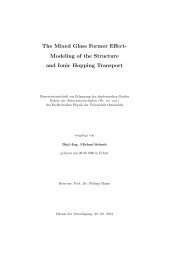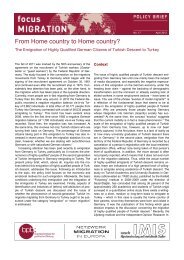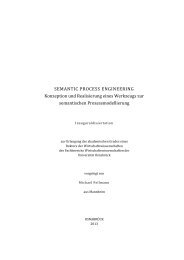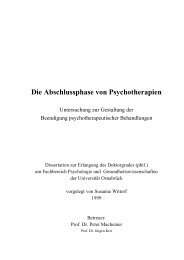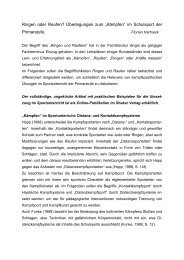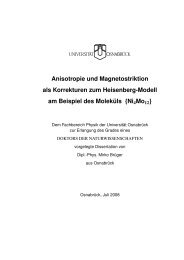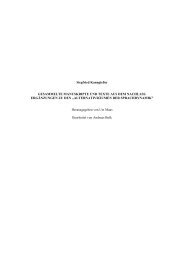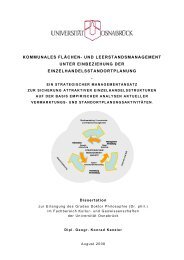340 Literatur DONOHOE, G., CORVIN, A. & ROBERTSON, I. H. (2005). Are the cognitive deficits associated with impaired insight in schizophrenia specific to executive task performance? Journal of Nervous and Mental Disease, 193(12), 803-808. DONOHOE, G., DONNELL, C. O., OWENS, N. & O'CALLAGHAN, E. (2004). Evidence that health attributions and symptom severity predict insight in schizophrenia. Journal of Nervous and Mental Disease, 192(9), 635-637. DRAKE, R. E. & COTTON, P. G. (1986). Depression, hopelessness and suicide in chronic schizophrenia. British Journal of Psychiatry, 148, 554-559. DRAKE, R. J., HALEY, C. J., AKHTAR, S. & LEWIS, S. W. (2000). Causes and consequences of duration of untreated psychosis in schizophrenia. British Journal of Psychiatry, 177, 511-515. DRAKE, R. J. & LEWIS, S. W. (2003). Insight and neurocognition in schizophrenia. Schizophrenia Research, 62(1-2), 165- 173. DRAKE, R. J., PICKLES, A., BENTALL, R. P., KINDERMAN, P., HADDOCK, G., TARRIER, N. & LEWIS, S. W. (2004). The evolution of insight, paranoia and depression during early schizophrenia. Psychological Medicine, 34(2), 285-292. DRAYTON, M., BIRCHWOOD, M. & TROWER, P. (1998). Early attachment experience and recovery from psychosis. British Journal of Clinical Psychology, 37(3), 269-284. DREWE, E. A. (1974). The effect of type and area of brain lesion on Wisconsin Card Sorting Test performance. Cortex, 10(2), 159-170. EDELSTEIN, E. L., NATHANSON, D. L. & STONE, A. M. (Hrsg.). (1989). Denial: A clarification of concepts and research. New York: Plenum. EISEN, J. L., PHILLIPS, K. A., BAER, L., BEER, D. A., ATALA, K. D. & RASMUSSEN, S. A. (1998). The Brown Assessment of Beliefs Scale: Reliability and validity. American Journal of Psychiatry, 155(1), 102-108. ELING, P., DERCKX, K. & MAES, R. (2008). On the historical and conceptual backgro<strong>und</strong> of the Wisconsin Card Sorting Test. Brain and Cognition, 67(3), 247-253. ELLASON, J. W. & ROSS, C. A. (1995). Positive and negative symptoms in dissociative identity disorder and schizophrenia: A comparative analysis. Journal of Nervous and Mental Disease, 183(4), 236-241. ELVEVÅG, B. & GOLDBERG, T. E. (1999). Commentary on Laws: Refining Laws — A rejoinder. Cognitive Neuropsychiatry, 4(1), 33-35. ENDLER, N. S. & PARKER, J. D. A. (1990). Multidimensional assessment of coping: A critical evaluation. Journal of Personality and Social Psychology, 58(5), 844-854. ENGLERT, J. S., GEBHARDT, R., SAUPE, R. & STIEGLITZ, R.-D. (1993). Erfassung von Krankheitsbewältigung. Validierungsstudie zur 'Ways of Coping Checklist' (WCCL) bei schizophrenen Patienten. Zeitschrift für Klinische Psychologie, 22(1), 77-82. ERDELYI, M. H. (2006). The unified theory of repression. Behavioral and Brain Sciences, 29(5), 499-511. ERTUGRUL, A. & ULUG, B. (2004). Perception of stigma among patients with schizophrenia. Social Psychiatry and Psychiatric Epidemiology, 39(1), 73-77. ESTROFF, S. E. (1989). Self, identity, and subjective experiences of schizophrenia: In search of the subject. Schizophrenia Bulletin, 15(2), 189-196. ETTLIN, T. & KISCHKA, U. (1999). Bedside frontal lobe testing: The »Frontal Lobe Score«. In B. L. MILLER & J. L. CUMMINGS (Hrsg.) The human frontal lobes: Functions and disorders (S. 233-246). New York: Guilford Press. EVREN, C. & EVREN, B. (2004). Characteristics of schizophrenic patients with a history of suicide attempt. International Journal of Psychiatry in Clinical Practice, 8(4), 227-234. EYSENCK, M. W. (1997). Anxiety and cognition: A unified theory. Hove, UK: Psychology Press. EYSENCK, M. W. & KEANE, M. T. (2005). Cognitive psychology: a student’s handbook (5. Aufl.). Hove, UK: Psychology Press. FABRIGAR, L. R., WEGENER, D. T., MACCALLUM, R. C. & STRAHAN, E. J. (1999). Evaluating the use of exploratory factor analysis in psychological research. Psychological Methods, 4(3), 272-299. FAHRIG, H., KRONMÜLLER, K. T., HARTMANN, M. & RUDOLF, G. (1996). Therapieerfolg analytischer Psychotherapie bei Kindern <strong>und</strong> Jungendlichen. Die Heidelberger Studie zur analytischen <strong>und</strong> Kinder- <strong>und</strong> Jugendlichen- Psychotherapie. Zeitschrift für Psychosomatische Medizin <strong>und</strong> Psychoanalyse, 42(4), 375-395. FARHALL, J., GREENWOOD, K. M. & JACKSON, H. J. (2007). Coping with hallucinated voices in schizophrenia: A review of self-initiated strategies and therapeutic interventions. Clinical Psychology Review, 27(4), 476-793. FAUL, F., ERDFELDER, E., LANG, A.-G., & BUCHNER, A. (2007). G*Power 3: A flexible statistical power analysis program for the social, behavioral, and biomedical sciences. Behavior Research Methods, 39, 175-191. FELDMAN, J. (2003). The Simplicity Principle in Human Concept Learning. Current Directions in Psychological Science, 12(6), 227-232. FENNIG, S., EVERETT, E., BROMET, E. J., JANDORF, L., FENNIG, S. R., TANENBERG-KARANT, M. & CRAIG, T. J. (1996). Insight in first-admission psychotic patients. Schizophrenia Research, 22(3), 257-263. FERNANDEZ, C. F. (2006). Association between handedness and insight into illness in schizophrenia. Dissertation Abstracts International: Section B: The Sciences and Engineering, 65(9-B), 4827.
341 Literatur FERRERI, M., ROUILLON, F., NUSS, P., BAZIN, N., FARAH, S., DJABALLAH, K. & GERARD, D. (2000). De quelles informations les patients souffrant de schizophrénie disposent-ils sur leur maladie et leur traitement? [What is the schizophrenic patients' level of information about their disease and their treatment?] L'Encéphale, 26(1), 30-38. FEY, E. T. (1951). The performance of young schizophrenics and young normals on the Wisconsin Card Sorting Test. Journal of Consulting Psychology, 15(4), 311-319. FILIPP, S.-H. & KLAUER, T. (1988). Ein dreidimensionales Modell zur Klassifikation von Formen der Krankheitsbewältigung. In H. KÄCHELE & W. STEFFENS (Hrsg.), Bewältigung <strong>und</strong> Abwehr. Zur Psychologie <strong>und</strong> Psychotherapie schwerer körperlicher Krankheiten. Berlin: Springer. FISSENI, H.-J. (2004). Lehrbuch der psychologischen Diagnostik (3. Aufl.). Göttingen: Hogrefe. FRAZIER, T. W., YOUNGSTROM, E. A., CHELUNE, G. J., NAUGLE, R. I. & LINEWEAVER, T. T. (2004). Increasing the reliability of ipsative interpretations in neuropsychology: A comparison of reliable components analysis and other factor analytic methods. Journal of the International Neuropsychological Society, 10(4), 578-589. FELDSTEIN, S. N., KELLER, F. R., PORTMAN, R. E., DURHAM, R. L., KLEBE, K. J. & DAVIS, H. P. (1999). A comparison of computerized and standard versions of the Wisconsin Card Sorting Test. Clinical Neuropsychologist, 13(3), 303- 313. FENTON, W. S., BLYLER, C. R. & HEINSSEN, R. K. (1997). Determinants of medication compliance in schizophrenia: Empirical and clinical findings. Schizophrenia Bulletin, 23(4), 637-651. FERRING, D. & FILIPP, S.-H. (1996). Messung des Selbstwertgefühls: Bef<strong>und</strong>e zu Reliabilität, Validität <strong>und</strong> Stabilität der Rosenberg-Skala. Diagnostica, 42(3), 284-292. FIORAVANTI, M., CARLONE, O., VITALE, B., CINTI, M. E. & CLARE, L. (2005). A meta-analysis of cognitive deficits in adults with a diagnosis of schizophrenia. Neuropsychology Review, 15(2), 73-95. FLASHMAN, L. A. & GREEN, M. F. (2004). Review of cognition and brain structure in schizophrenia: profiles, longitudinal course, and effects of treatment. Psychiatric Clinics of North America, 27(1), 1-18. FLASHMAN, L. A., MCALLISTER, T. W., ANDREASEN, N. C. & SAYKIN, A. J. (2000). Smaller brain size associated with unawareness of illness in patients with schizophrenia. American Journal of Psychiatry, 157(7), 1167-1169. FLASHMAN, L. A., MCALLISTER, T. W., JOHNSON, S. C., RICK, J. H., GREEN, R. L. & SAYKIN, A. J. (2001). Specific frontal lobe subregions correlated with unawareness of illness in schizophrenia: A preliminary study. Journal of Neuropsychiatry & Clinical Neurosciences, 13(2), 255-257. FLASHMAN, L. A. & ROTH, R. M. (2004). Neural correlates of unawareness of illness in psychosis. In X. F. AMADOR & A. S. DAVID (Hrsg.), Insight and psychosis: Awareness of illness in schizophrenia and related disorders (2. Aufl.) (S. 157 – 176). New York: Oxford University Press. FLEISS, J. L. (1971). Measuring nominal scale agreement among many raters. Psychological Bulletin, 76(5), 378-382. FLYNN, J. R. (1984). The mean IQ of Americans: Massive gains 1932 to 1978. Psychological Bulletin, 95(1), 29-51. FLYNN, J. R. (1987). Massive IQ gains in 14 nations: What IQ tests really measure. Psychological Bulletin, 101(2), 171- 191. FLYNN, J. R. & WEISS, L. G. (2007). American IQ gains from 1932 to 2002: The WISC subtests and educational progress. International Journal of Testing, 7(2), 209-224. FOLEY, S., JACKSON, D., MCWILLIAMS, S., RENWICK, L., SUTTON, M., TURNER, N., KINSELLA, A. & O'CALLAGHAN, E. (2008). Suicidality prior to presentation in first-episode psychosis. Early Intervention in Psychiatry, 2(4), 242-246. FOLKMAN, S. (1986). Dynamics of a stressful encounter: Cognitive appraisal, coping, and encounter outcomes. Journal of Personality and Social Psychology, 50(5), 992-1003. FOLKMAN, S., LAZARUS, R. S., GRUEN, R. J. & DELONGIS, A. (1986). Appraisal, coping, health status, and psychological symptoms. Journal of Personality and Social Psychology, 50(3), 571-579. FRANZEN, M. D., BURGESS, E. J. & SMITH-SEEMILLER, L. (1997). Methods of estimating premorbid functioning. Archives of Clinical Neuropsychology, 12(8), 711-738. FRASURE-SMITH, N., LESPÉRANCE, F., GRAVEL, G., MASSON, A., JUNEAU, M. & BOURASSA, M. G. (2002). Long-term survival differences among low-anxious, high-anxious and repressive copers enrolled in the Montreal Heart Attack Readjustment Trial. Psychosomatic Medicine, 64(4), 571-579. FREEDMAN, D. J. & MILLER, E. K. (2008) Neural mechanisms of visual categorization: Insights from neurophysiology. Neuroscience & Biobehavioral Reviews, 32(2), 311-329. FREEMAN, D. (2007). Suspicious minds: The psychology of persecutory delusions. Clinical Psychology Review, 27(4), 425-457. FRERICHS, R. J. & TUOKKO, H. A. (2005). A comparison of methods for measuring cognitive change in older adults. Archives of Clinical Neuropsychology, 20(3), 321-333. FREUD, A. (1984/ 1936). Das Ich <strong>und</strong> die Abwehrmechanismen (17. Aufl.). Frankfurt/ M.: Fischer. FREUD, S. (1924). Der Realitätsverlust bei Neurose <strong>und</strong> Psychose. Internationale Zeitschrift für Psychoanalyse, 10, 374- 379. FREUDENREICH, O., CATHER, C., EVINS, A. E., HENDERSON, D. C. & GOFF, D. C. (2004). Attitudes of schizophrenia outpatients toward psychiatric medications: relationship to clinical variables and insight. Journal of Clinical Psychiatry, 65(10), 1372-1376. FRISTOE, N. M., SALTHOUSE, T. A. & WOODARD, J. L. (1997). Examination of age-related deficits on the Wisconsin Card Sorting Test. Neuropsychology, 11(3), 428-436.
- Seite 1 und 2:
Krankheitseinsicht, dynamisch getes
- Seite 3 und 4:
Danksagung iii Einleitung Es wird Z
- Seite 5 und 6:
v Einleitung 5.2.3.5 Prozessorienti
- Seite 7 und 8:
vii Einleitung 12.1.3 Ergebnisse St
- Seite 9 und 10:
ix Einleitung Tabelle 45. Hauptkomp
- Seite 11 und 12:
Tabelle 1. Verzeichnis der wichtigs
- Seite 13 und 14:
Abstract xiii Einleitung Objective:
- Seite 15 und 16:
15 Einleitung Angesichts der Belieb
- Seite 17 und 18:
17 Einleitung Bewältigungsmodell v
- Seite 19 und 20:
19 Wisconsin Card Sorting Test 2001
- Seite 21 und 22:
21 Wisconsin Card Sorting Test Effe
- Seite 23 und 24:
23 Wisconsin Card Sorting Test Das
- Seite 25 und 26:
Tabelle 2. Exekutive und Arbeitsged
- Seite 27 und 28:
3.3 Durchführung und Kennwerte des
- Seite 29 und 30:
3.4 WCST-Defizite bei Schizophrenie
- Seite 31 und 32:
Tabelle 5. Konzeptuelles Schema zur
- Seite 33 und 34:
3.5.1 Attributidentifikation / Abst
- Seite 35 und 36:
35 Wisconsin Card Sorting Test oder
- Seite 37 und 38:
37 Wisconsin Card Sorting Test elem
- Seite 39 und 40:
39 Wisconsin Card Sorting Test ein
- Seite 41 und 42:
41 Wisconsin Card Sorting Test Fehl
- Seite 43 und 44:
43 Wisconsin Card Sorting Test zus
- Seite 45 und 46:
45 Wisconsin Card Sorting Test Lern
- Seite 47 und 48:
3.5.5 Orientierungsvariablen 47 Wis
- Seite 49 und 50:
49 Wisconsin Card Sorting Test zehn
- Seite 51 und 52:
51 Wisconsin Card Sorting Test Fehl
- Seite 53 und 54:
53 Wisconsin Card Sorting Test mit
- Seite 55 und 56:
55 Wisconsin Card Sorting Test PAOL
- Seite 57 und 58:
Tabelle 6. Übersicht über Studien
- Seite 59 und 60:
3.7.3 Faktorstruktur des WCST 59 Wi
- Seite 61 und 62:
Tabelle 7 (Fortsetzung). (o) (p) (q
- Seite 63 und 64:
3.8.2 Bildung 63 Wisconsin Card Sor
- Seite 65 und 66:
3.9 Der Dynamische WCST in der Schi
- Seite 67 und 68:
67 Wisconsin Card Sorting Test darg
- Seite 69 und 70:
69 Wisconsin Card Sorting Test WIED
- Seite 71 und 72:
71 Wisconsin Card Sorting Test Durc
- Seite 73 und 74:
73 Wisconsin Card Sorting Test 3.9.
- Seite 75 und 76:
75 Wisconsin Card Sorting Test WALL
- Seite 77 und 78:
4. Statistische Modelle der Veränd
- Seite 79 und 80:
79 Reliable Change Index mittleren
- Seite 81 und 82:
81 Reliable Change Index (b) x2 sol
- Seite 83 und 84:
83 Reliable Change Index (3.) regre
- Seite 85 und 86:
85 Reliable Change Index Bei einem
- Seite 87 und 88:
87 Reliable Change Index statistisc
- Seite 89 und 90:
89 Reliable Change Index der Differ
- Seite 91 und 92:
91 Reliable Change Index Patienten
- Seite 93 und 94:
93 Reliable Change Index Tabelle 8.
- Seite 95 und 96:
95 Reliable Change Index WIEDL, WIE
- Seite 97 und 98:
97 Coping und Abwehr (3.) die oftma
- Seite 99 und 100:
Darstellung der wichtigsten tiefenp
- Seite 101 und 102:
101 Coping und Abwehr unterschiedli
- Seite 103 und 104:
103 Coping und Abwehr von Bewältig
- Seite 105 und 106:
105 Coping und Abwehr bedrohliche K
- Seite 107 und 108:
107 Coping und Abwehr das Problem d
- Seite 109 und 110:
5.2.3.6 Antezedenzien von Bewertung
- Seite 111 und 112:
6. Krankheitseinsicht von Menschen
- Seite 113 und 114:
113 Krankheitseinsicht die Bedeutun
- Seite 115 und 116:
115 Krankheitseinsicht Kombination
- Seite 117 und 118:
117 Krankheitseinsicht negative Bew
- Seite 119 und 120:
119 Krankheitseinsicht Während die
- Seite 121 und 122:
121 Krankheitseinsicht WARNER, TAYL
- Seite 123 und 124:
123 Krankheitseinsicht Symptomatik
- Seite 125 und 126:
125 Krankheitseinsicht (z. B. aus d
- Seite 127 und 128:
127 Krankheitseinsicht Diesem Zweck
- Seite 129 und 130:
6.5.2 Krankheitseinsicht: Begriffsk
- Seite 131 und 132:
131 Krankheitseinsicht Der erste be
- Seite 133 und 134:
Tabelle 11. Konfigurationen von Ein
- Seite 135 und 136:
6.5.4.1 Einsichts-Interviews 135 Kr
- Seite 137 und 138:
137 Krankheitseinsicht having sympt
- Seite 139 und 140:
139 Krankheitseinsicht Self-Apprais
- Seite 141 und 142:
141 Krankheitseinsicht chronifizier
- Seite 143 und 144:
143 Krankheitseinsicht have a menta
- Seite 145 und 146:
145 Krankheitseinsicht veröffentli
- Seite 147 und 148:
147 Krankheitseinsicht werden als r
- Seite 149 und 150:
149 Krankheitseinsicht Wichtig wär
- Seite 151 und 152:
151 Krankheitseinsicht Die Befundla
- Seite 153 und 154:
Pfad b Interaktionale Konstruktion
- Seite 155 und 156:
155 Krankheitseinsicht Validierung
- Seite 157 und 158:
6.5.12 Die nosologische Hypothese:
- Seite 159 und 160:
159 Krankheitseinsicht Die Möglich
- Seite 161 und 162:
161 Krankheitseinsicht Exekutivfunk
- Seite 163 und 164:
163 Krankheitseinsicht (z. B. HILL,
- Seite 165 und 166:
165 Krankheitseinsicht Einige Autor
- Seite 167 und 168:
167 Krankheitseinsicht Fehlattribut
- Seite 169 und 170:
6.5.14 Motivationale Hypothesen: Ab
- Seite 171 und 172:
171 Krankheitseinsicht Das RS-Konze
- Seite 173 und 174:
173 Krankheitseinsicht problemzentr
- Seite 175 und 176:
175 Krankheitseinsicht ursprünglic
- Seite 177 und 178:
177 Krankheitseinsicht reduzierter
- Seite 179 und 180:
179 Krankheitseinsicht äußerst kn
- Seite 181 und 182:
Prämorbide Intelligenz Psychose- E
- Seite 183 und 184:
183 Krankheitseinsicht personen, al
- Seite 185 und 186:
6.5.16 Multifaktorielle Einsichts-M
- Seite 187 und 188:
187 Krankheitseinsicht Erkrankungsb
- Seite 189 und 190:
7. Fragestellungen und Hypothesen 1
- Seite 191 und 192:
Hypothese 2.4: Validierung anhand d
- Seite 193 und 194:
Hypothese 3.3: Einsicht und Exekuti
- Seite 195 und 196:
8. Methoden 8.1 Beschreibung der In
- Seite 197 und 198:
197 Methoden Select-by-marker-Analy
- Seite 199 und 200:
199 Methoden eine weitere, eher all
- Seite 201 und 202:
201 Methoden Obwohl ursprünglich l
- Seite 203 und 204:
203 Methoden Tabelle 15 stellt den
- Seite 205 und 206:
205 Ergebnisse Studie 1 Hälfte auc
- Seite 207 und 208:
207 Ergebnisse Studie 1 Tabelle 18.
- Seite 209 und 210:
9.4 Hauptkomponentenanalyse des WCS
- Seite 211 und 212:
10. Ergebnisse Studie 2: 211 Ergebn
- Seite 213 und 214:
213 Ergebnisse Studie 2 postakuten
- Seite 215 und 216:
215 Ergebnisse Studie 2 entspricht
- Seite 217 und 218:
217 Ergebnisse Studie 2 Verteilung
- Seite 219 und 220:
Tabelle 24. Übersicht über berech
- Seite 221 und 222:
Tabelle 26. Zehn WCST-Performanztyp
- Seite 223 und 224:
223 Ergebnisse Studie 2 Zusammenhan
- Seite 225 und 226:
10.6 Unterschiedstests und Konkorda
- Seite 227 und 228:
227 Ergebnisse Studie 2 nach LANDIS
- Seite 229 und 230:
229 Ergebnisse Studie 2 zur Decke,
- Seite 231 und 232:
10.8 Komposition von Metatypen 231
- Seite 233 und 234:
Tabelle 35. Cluster-Varianzen und F
- Seite 235 und 236:
10.8.2 Übereinstimmung von RCI-Typ
- Seite 237 und 238:
Tabelle 39. Kreuztabelle WCSTdyn-Cl
- Seite 239 und 240:
239 Ergebnisse Studie 2 Die dargest
- Seite 241 und 242:
Tabelle 42. Korrekte Sortierungen i
- Seite 243 und 244:
10.9 Soziodemographische und klinis
- Seite 245 und 246:
Tabelle 45. Rotierte Komponentenmat
- Seite 247 und 248:
10.10 Externe Validierung der Metat
- Seite 249 und 250:
249 Ergebnisse Studie 2 Es besteht
- Seite 251 und 252:
Tabelle 51. Lernverläufe der AVLT-
- Seite 253 und 254:
253 Ergebnisse Studie 2 10.10.3 Faz
- Seite 255 und 256:
255 Ergebnisse Studie 2 Angesichts
- Seite 257 und 258:
10.12 Analyse von WCST-Fehlerprofil
- Seite 259 und 260:
259 Ergebnisse Studie 2 ausschließ
- Seite 261 und 262:
261 Ergebnisse Studie 2 Die Fehler-
- Seite 263 und 264:
263 Ergebnisse Studie 3 den Zusamme
- Seite 265 und 266:
265 Ergebnisse Studie 3 übrigen It
- Seite 267 und 268:
267 Ergebnisse Studie 3 Partialkorr
- Seite 269 und 270:
Tabelle 66. Symptombewusstheit, Pos
- Seite 271 und 272:
271 Ergebnisse Studie 3 11.6 Konver
- Seite 273 und 274:
11.8 Aktive und passive Medikations
- Seite 275 und 276:
11.10 Einsicht, Exekutivfunktionen
- Seite 277 und 278:
277 Ergebnisse Studie 3 Offenheit k
- Seite 279 und 280:
279 Ergebnisse Studie 3 52 Patiente
- Seite 281 und 282:
281 Ergebnisse Studie 3 wies einen
- Seite 283 und 284:
283 Ergebnisse Studie 3 Insgesamt k
- Seite 285 und 286:
285 Ergebnisse Studie 3 Das gleiche
- Seite 287 und 288:
287 Ergebnisse Studie 3 G12 = 3,5 (
- Seite 289 und 290: Tabelle 81. Kognition und Symptomat
- Seite 291 und 292: 291 Ergebnisse Studie 3 Aufgrund de
- Seite 293 und 294: 293 Ergebnisse Studie 3 Es ist auff
- Seite 295 und 296: 295 Ergebnisse Studie 3 Im nächste
- Seite 297 und 298: 297 Ergebnisse Studie 3 kognitiv le
- Seite 299 und 300: 299 Diskussion An einer nicht-psych
- Seite 301 und 302: Hypothese Gegenstand Ergebnis 2.1 S
- Seite 303 und 304: 3.5 Kurvilinearer Zusammenhang (qua
- Seite 305 und 306: 12.2.2 Diskussion Studie 2: RCI-Ver
- Seite 307 und 308: 307 Diskussion Insbesondere scheint
- Seite 309 und 310: 309 Diskussion »Metatypen« zu kl
- Seite 311 und 312: 311 Diskussion Fehlertypen: Währen
- Seite 313 und 314: 313 Diskussion Funktionsbereiche (s
- Seite 315 und 316: 12.2.3.1 Diskussion der OSSTI 315 D
- Seite 317 und 318: 12.2.3.2 Einsicht und Depressivitä
- Seite 319 und 320: 12.2.3.3 Einsicht und Exekutivfunkt
- Seite 321 und 322: 321 Diskussion Arbeitsgedächtnis (
- Seite 323 und 324: 323 Diskussion zur hirnorganisch ve
- Seite 325 und 326: 12.2.3.5 Überprüfung des Einsicht
- Seite 327 und 328: 327 Diskussion sozialer Konsequenze
- Seite 329 und 330: 329 Diskussion Diagnose zurückwies
- Seite 331 und 332: 12.3 Schlusswort 331 Diskussion Die
- Seite 333 und 334: Literatur ACKERMANN, R. & DERUBEIS,
- Seite 335 und 336: 335 Literatur BAUMEISTER, R. F., DA
- Seite 337 und 338: 337 Literatur BURNS, J. W. (2000).
- Seite 339: 339 Literatur DABAN, C., AMADO, I.,
- Seite 343 und 344: 343 Literatur GOLDMAN, R. S., AXELR
- Seite 345 und 346: 345 Literatur HAYGOOD, R. C. & BOUR
- Seite 347 und 348: JANZARIK, W. (2003). Der Psychose-B
- Seite 349 und 350: 349 Literatur KOLB, B. & WHISHAW, I
- Seite 351 und 352: 351 Literatur LYSAKER, P. H. & BELL
- Seite 353 und 354: 353 Literatur MCGUIGAN, F. J. (1974
- Seite 355 und 356: 355 Literatur NIEUWENSTEIN, M. R.,
- Seite 357 und 358: 357 Literatur PINI, S., CASSANO, G.
- Seite 359 und 360: 359 Literatur SACKEIM, H. A. & GUR,
- Seite 361 und 362: 361 Literatur SMITH, T. E., HULL, J
- Seite 363 und 364: 363 Literatur TRANULIS, C., LEPAGE,
- Seite 365 und 366: 365 Literatur WEILER, M. A., FLEISH
- Seite 367 und 368: 367 Literatur YOUNG, D. A., ZAKZANI
- Seite 369 und 370: Perseverative Fehler Prätest .161
- Seite 371 und 372: C Einverständniserklärung 371 Anh
- Seite 373 und 374: E Fragebogen zur Behandlungseinsch
- Seite 375 und 376: F FKV-Instruktion »Trait« 375 Anh
- Seite 377 und 378: Coping Strategies Task (CST): Auswe
- Seite 379: 379 Anhang Erklärung über die Eig



